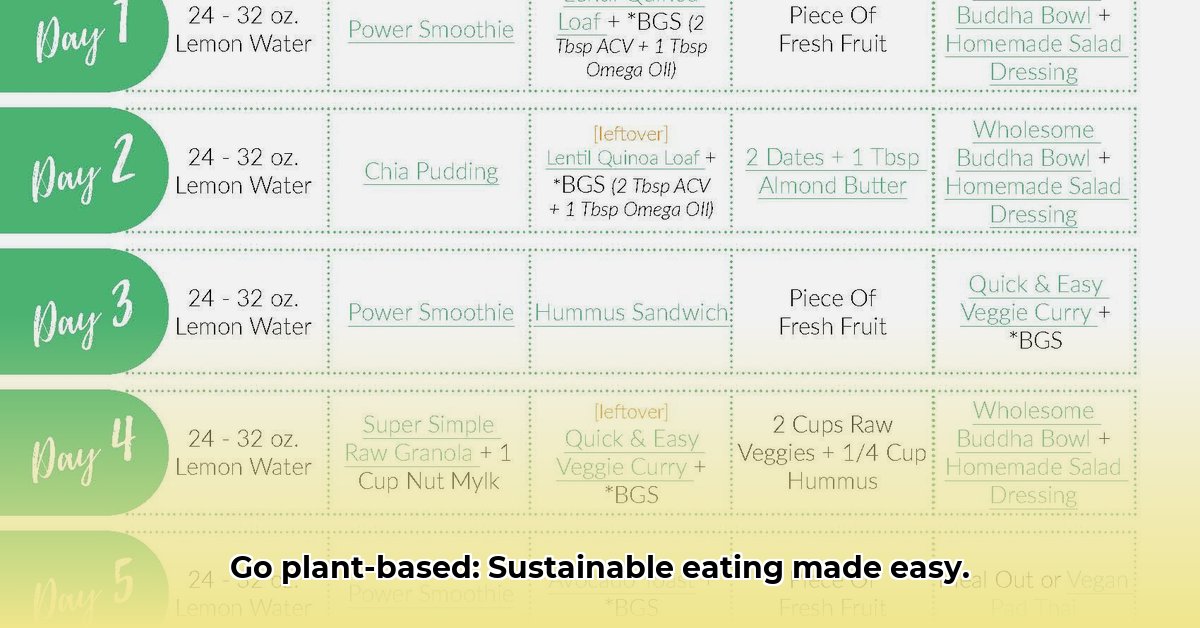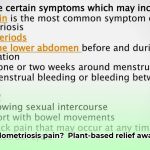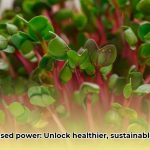Want to eat healthier and help the planet at the same time? This guide will show you how to shop for a delicious, plant-based diet that’s easy on your body and the environment. We’ll walk you through choosing the best foods, making sure you get all the nutrients you need, and building sustainable eating habits that last. For a more detailed shopping list, check out this helpful plant-based guide. It’s more than just a shopping list; it’s a plan to feel great and make a difference. Let’s get started!
Your Whole Food Plant-Based Diet Shopping List: A Path to Sustainable Eating Habits
Embarking on a whole food, plant-based diet can feel like a big leap, but it doesn’t have to be overwhelming! This guide will help you create a shopping list that’s both delicious and environmentally friendly. Think of it as a personalized roadmap to better health and a lighter footprint on the planet.
Building Your Plant-Based Pantry: The Essential Staples for Plant-Based Living
Before diving into exciting recipes, let’s build a foundation of pantry staples that are versatile and packed with nutrition. These are your go-to ingredients for countless meals.
-
Fruits and Vegetables: A Rainbow of Goodness: Imagine your shopping cart bursting with vibrant colors! Think deep-red strawberries, leafy spinach, bright-orange carrots, crunchy broccoli, and juicy blueberries. The more diverse your produce, the more vitamins and minerals you’ll be consuming. Explore different varieties like Romanesco broccoli or heirloom tomatoes for added excitement. And don’t forget about seasonal produce; it’s often cheaper and tastes amazing because it’s picked at its peak ripeness. Check your local farmer’s market for the best selection.
-
Legumes: The Protein Powerhouses: Beans, lentils, and chickpeas are your protein friends! They’re inexpensive, incredibly versatile, and a fantastic source of fiber. You can toss them into salads, soups, stews, or even make delicious dips like hummus or baba ghanoush. Buying them dried saves money and reduces packaging waste, and they have a longer shelf life. Experiment with different types like black beans, kidney beans, cannellini beans, or French lentils.
-
Whole Grains: Sustained Energy and Fiber: Oats, quinoa, brown rice, wild rice, farro, and whole-wheat pasta are excellent energy sources. These grains provide sustained energy and loads of fiber, keeping you feeling full and satisfied. When shopping, always prioritize minimally processed options for maximum nutritional value. Look for whole grain versions of your favorite breads, cereals, and crackers. Consider exploring ancient grains like amaranth or spelt for a unique flavor profile.
-
Nuts and Seeds: Healthy Fats and More: Almonds, walnuts, chia seeds, flax seeds, hemp seeds, and pumpkin seeds are nutritional powerhouses. They’re packed with healthy fats, protein, and fiber. Sprinkle them on salads, add them to yogurt or smoothies, or enjoy them as a satisfying snack. They add amazing texture and flavor to your dishes. Try making your own nut butter for a cost-effective and waste-reducing alternative to store-bought versions.
-
Healthy Oils: Essential for Well-being: Avocados, olive oil, coconut oil, and nuts and seeds provide those essential healthy fats. These fats are crucial for brain health, hormone production, and overall well-being. Incorporate them into your diet regularly, but be mindful of portion sizes, as they are calorie-dense. Opt for extra virgin olive oil for its superior flavor and antioxidant content.
Expanding Your Flavor Horizons: Beyond the Basics for Delicious Plant-Based Meals
Once your pantry is stocked with staples, it’s time to add some exciting flavors and variety to your meals.
-
Herbs and Spices: The Flavor Enhancers: Don’t underestimate the power of herbs and spices! They can transform simple dishes into culinary masterpieces, adding depth and complexity to your meals. Experiment with different combinations to discover your favorite flavor profiles. Grow your own herbs for a fresh and sustainable option. Essential herbs include basil, oregano, thyme, rosemary, cilantro, and parsley. Stock up on spices like cumin, coriander, chili powder, turmeric, paprika, and ginger.
-
Dried Fruits: A Touch of Sweetness: Raisins, cranberries, dates, figs, and apricots can add a touch of natural sweetness without the added refined sugars found in many processed foods. Just remember to check the labels to ensure there are no sneaky additions like sulfites. Use them in oatmeal, granola, or homemade energy bars.
-
Plant-Based Milks: A Dairy Alternative: Soy milk, almond milk, oat milk, coconut milk, and cashew milk – the choices are vast! Check the labels carefully to avoid those with excessive added sugars and opt for unsweetened varieties. Consider making your own plant-based milk for a truly sustainable and cost-effective option.
-
Nutritional Yeast: A Cheesy Surprise: This is a fantastic ingredient that adds a cheesy, nutty, and savory flavor to dishes. It’s also a good source of B vitamins—a bonus for your health! Use it to make vegan cheese sauces, sprinkle it on popcorn, or add it to pasta dishes.
-
Sea Vegetables: Nutrient Rich from the Sea: Seaweed like nori, kelp and dulse are packed with minerals like iodine, crucial for thyroid health. Add nori to soups or make sushi. Use kelp granules as a salt substitute.
Crafting Your Personalized Shopping List: A Step-by-Step Guide to Plant-Based Success
Now that you have a good understanding of the essential ingredients, let’s create your personalized shopping list.
Step 1: Plan Your Meals: Take some time each week to think about what you’d like to eat. This will help you avoid impulse buys and ensure you have all the necessary ingredients. Even a rough plan helps tremendously. Consider using a meal planning app or website for inspiration and organization.
Step 2: Check Your Pantry: Before heading to the store, take inventory of what you already have. This prevents buying duplicates and saves you money. Keep a running list of staples you need to replenish.
Step 3: Create Your List: Based on your meal plan and pantry inventory, create a detailed list of the fruits, vegetables, grains, legumes, and other ingredients you’ll need. Be specific! Include quantities and any specific brands you prefer.
Step 4: Shop Smart: Stick to your list to avoid tempting impulse buys! Check for sales and seasonal produce to save money and support local farmers. Shop at stores with bulk bins to reduce packaging waste.
Step 5: Utilize Apps: Consider using a grocery shopping app to organize your list, compare prices, and even locate items in the store. Many apps can even create lists automatically based on your meal plan. Some popular apps include AnyList, OurGroceries, and Mealime.
Sustainable Shopping: Making Ethical Choices for a Healthier Planet
Sustainable eating isn’t just about what you eat; it’s about how you acquire it.
- Buy Local: Whenever possible, support local farmers markets and farms. This reduces your carbon footprint and helps support your community. Look for Community Supported Agriculture (CSA) programs in your area.
- Reduce Food Waste: Plan your meals carefully, store food properly, and get creative with leftovers. Composting food scraps is also a great way to reduce waste. Store produce properly to extend its shelf life (e.g., store onions and potatoes in a cool, dark place, and wrap leafy greens in a damp paper towel).
- Choose Sustainable Packaging: Opt for minimal packaging or reusable containers whenever possible. This helps reduce plastic waste. Bring your own reusable bags, produce bags, and containers to the store.
- Support Ethical Brands: Look for companies that prioritize fair labor practices and environmental sustainability. Look for certifications like Fair Trade, Certified B Corporation, and USDA Organic.
- Grow Your Own: Start a garden, even a small one, to grow some of your own fruits, vegetables, and herbs.
Addressing Potential Challenges: It’s a Journey, Not a Race to Plant-Based Living!
Transitioning to a plant-based diet might present some challenges, but remember, it’s a process of learning and adapting.
Potential Challenges:
| Challenge | Solutions |
|---|---|
| Nutritional Adequacy | Ensure you’re getting enough vitamin B12, vitamin D, iron, calcium, iodine, and omega-3 fatty acids. Supplementation may be needed. Consult with a registered dietitian or healthcare professional for personalized recommendations. |
| Meal Planning | Dedicate time to meal planning. Start small, focusing on one or two meals a week. Batch cook meals on the weekend to save time during the week. |
| Social Gatherings | Communicate your dietary preferences clearly. Offer to bring a plant-based dish to share. Research plant-based options at restaurants beforehand. |
| Cravings for Non-Plant Based Foods | Explore delicious plant-based alternatives. Experiment with new recipes and flavors. Focus on the abundance and variety of plant-based foods you can enjoy. |
This whole food plant-based shopping list is a starting point. Experiment, have fun, and enjoy the journey of discovering new flavors and creating delicious, healthy, and sustainable meals. Remember, progress, not perfection, is the goal!
How to Ensure Nutritional Adequacy on a Sustainable Plant-Based Diet: Expert Tips
Key Takeaways:
- Planning is key to **how to ensure nutritional
- Plant-based Diet Colitis Remission: Success Stories - December 18, 2025
- Plant Based Diet Breast Cancer: Research-Based Benefits - December 16, 2025
- Plant-Based Diet Ulcerative Colitis Remission: Proven Benefits - December 15, 2025










